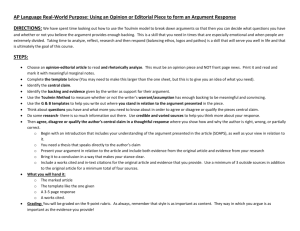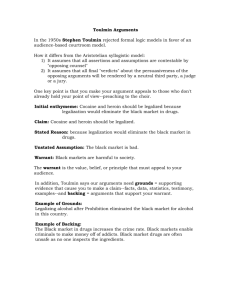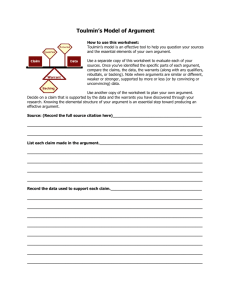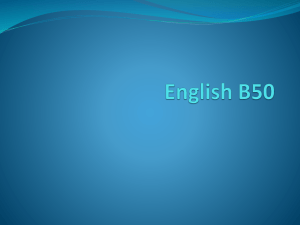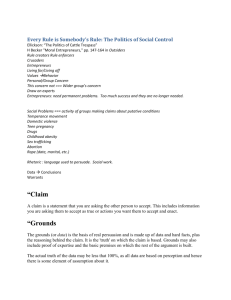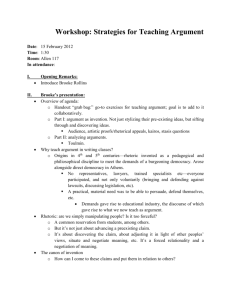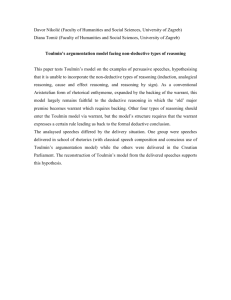Toulmin Argument Structure - Trinity Washington University
advertisement
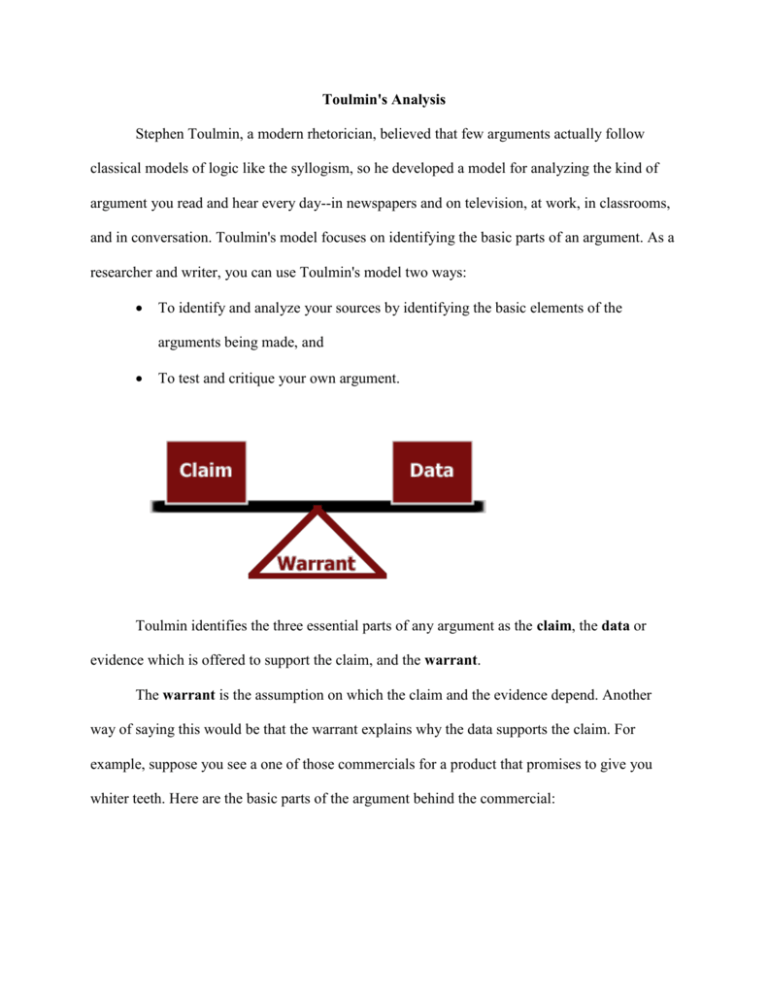
Toulmin's Analysis Stephen Toulmin, a modern rhetorician, believed that few arguments actually follow classical models of logic like the syllogism, so he developed a model for analyzing the kind of argument you read and hear every day--in newspapers and on television, at work, in classrooms, and in conversation. Toulmin's model focuses on identifying the basic parts of an argument. As a researcher and writer, you can use Toulmin's model two ways: To identify and analyze your sources by identifying the basic elements of the arguments being made, and To test and critique your own argument. Toulmin identifies the three essential parts of any argument as the claim, the data or evidence which is offered to support the claim, and the warrant. The warrant is the assumption on which the claim and the evidence depend. Another way of saying this would be that the warrant explains why the data supports the claim. For example, suppose you see a one of those commercials for a product that promises to give you whiter teeth. Here are the basic parts of the argument behind the commercial: Claim You should buy our tooth-whitening product. Data Studies show that teeth are 50% whiter after using the product for a specified time. Warrant People want whiter teeth. Notice that those commercials don't usually bother trying to convince you that you want whiter teeth; instead, they assume that you have bought into the value our culture places on whiter teeth. When an assumption--a warrant in Toulmin's terms--is unstated, it's called an implicit warrant. Sometimes, however, the warrant may need to be stated because it is a powerful part of the argument. When the warrant is stated, it's called an explicit warrant. Toulmin says that the weakest part of any argument is its weakest warrant. Remember that the warrant is the link between the data and the claim. If the warrant isn't valid, the argument collapses. Now that you're familiar with the three main parts of an argument, let's look at three other elements Toulmin identified. Qualifier A qualifier is a statement about how strong the claim is. For example, if you are claiming that stains on teeth are caused by drinking coffee, you might need to acknowledge that there may be other causes as well. Your qualified claim would be that drinking coffee is the most significant cause (although perhaps not the only cause) of stained teeth. Rebuttal A rebuttal is an exception to your claim. For example, you might have to acknowledge that a certain kind of coffee does not stain teeth. Your claim, however, would be that coffee is the major cause of stained teeth except for those coffee drinkers who drink the special non-teeth staining coffee. Backing Sometimes the warrant is an important part of the argument. Additionally, sometimes the warrant is not broadly understood or broadly accepted. In this case, a speaker or writer may have to defend the warrant. In our example, the warrant would need to be backed by reasons such as the argument that whiter teeth will help you get more dates or that whiter teeth will make you look better in yearbook photos. Reasons that support the warrant are called backing. So--how do you make this model work for you? Have you ever noticed that when you research both sides of a question, you find yourself being convinced first by one side, and then by the other? Each argument sounds good--at least while you are reading it. When you read an argument which takes an opposite position--that sounds good too, and soon you may feel completely confused. Toulmin to the rescue! By identifying the parts of an argument so each can be evaluated separately, Toulmin created a very useful model for analyzing the validity of an argument. Submit each source you study to rigorous Toulmin analysis. Identify each argument's claims, data, and warrants. Look for qualifiers, rebuttals, and backing for the warrants. Compare one claim with another. Compare data between the two arguments. Compare warrants and their backing, qualifiers, and rebuttals. By analyzing the separate parts of an argument, you'll be much better equipped to evaluate each argument's validity. Then, as you begin to write, use Toulmin's methods to submit your own argument to the same rigorous analysis. Please note that this page presents only a very simplified version of Toulmin's theory. For a more complete understanding, you should read Toulmin's book The Uses of Argument (Cambridge University Press, 1958). Source: http://owlet.letu.edu/contenthtml/research/toulmin.html
